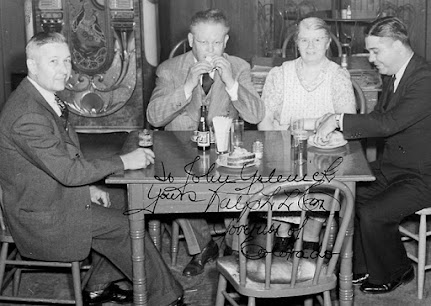Ever since the National Western Stock Show was officially established in 1906, Globeville enjoyed the trickle-down economic bounty from the event. During its ten-day run, the Stock Show was a source of jobs and a boon to local taverns, restaurants, hotels and merchants. School children enjoyed a day away from the classroom to see farm animals, mutton busting, horse shows and numerous rodeos.
In 1960, the nearby meatpacking industry was Globeville’s and the city’s
largest employer. But the decade that followed saw mergers and acquisitions that resulted in a loss of jobs.
Soon feedlot operators built out-of-town facilities to
slaughter and process meat, shipping directly to stores and bypassing the packing plants. The change
affected the “Big Four:” Swift shut
down in April 1966 and Armour in 1968. Cudahy
continued to operate until it was acquired by Bar-S in 1981, and Wilson limped
along until closing in 1981. The stock pens were deserted and the Stock Show Complex began to deteriorate.
Every January, the National Western Stock Show continued to generate excitement and revenue. But for the rest of the year, the run-down complex struggled to stay relevant, hosting tattoo conventions, model trains exhibits and bridal shows. Meanwhile, in 2011, the city of Aurora offered tax incentives to relocate the Stock Show as part of the Gaylord Hotel complex. Thankfully, in 2015, Denver voters approved 2C.
John Zapien, member of the Citizens Advisory Committee
The
measure extended a 1.75 percent tax on hotel rooms and rental cars in
Denver, generating $622 million for the project. CSU pledged another $250 million to construct facilities for education, and the Stock Show donated 75 acres of land and $50 million in cash.
Longtime
Globeville resident John Zapien once worked as a “lugger” for Wilson,
lugging lamb off a hook and onto a truck. Zapien has also represented
the community’s interests for decades. Now a member of the National
Western Citizens Advisory Committee, he is the only community
member who gets a vote on the authority’s board. He and other residents
look forward to the jobs that construction and new facilities will bring
and the CSU educational opportunities for children.
“Who
would have thought we’d have a college campus right where the stockyard
was? They’re not just dealing with animals, but information and water,
which is terribly crucial. I see this as a wonderful opportunity for
young people,” Zapien said. “I think one of the biggest bridges is the
food on the table. Whether you live in Globeville or Elyria or Swansea
or Burlington or Clifton or Palisade or Rifle, there are some real
similarities that we can work on together in the future with our rural
neighbors. They’re the same as we are, they just live out of town.”




















